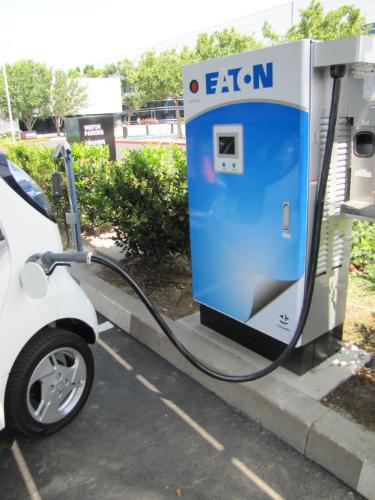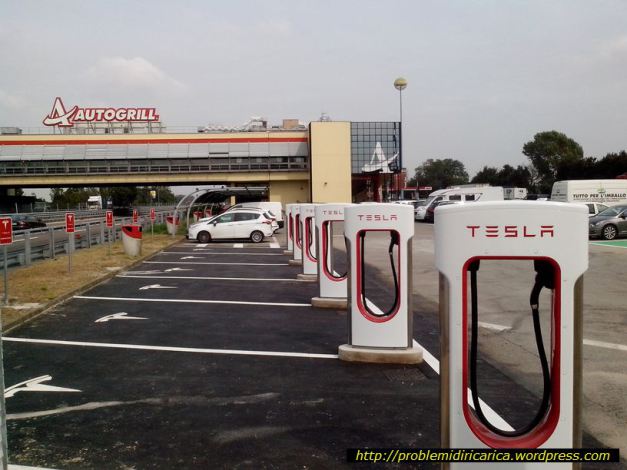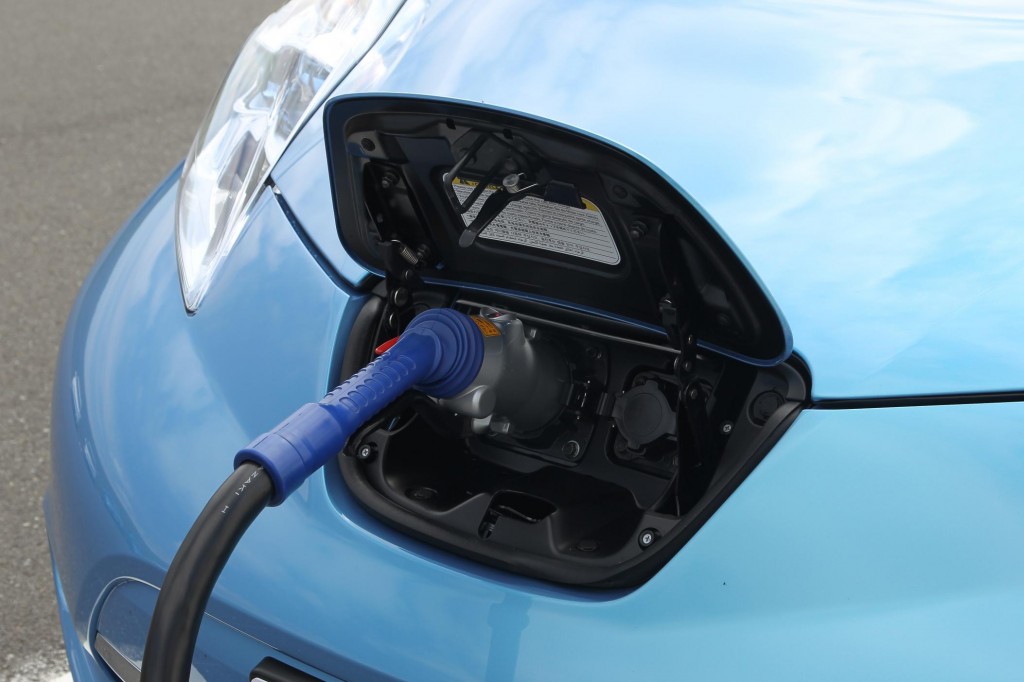The ability to recharge 80 percent of an electric car's battery in 20 to 30 minutes--known as DC fast-charging--is a critical element in expanding public acceptance of cars powered by batteries.
But unlike the universal standard for conventional 240-Volt charging, the U.S. has three different and (mostly) incompatible fast-charging standards.
DON'T MISS: Now That's Combo Quick Charging: CHAdeMO, CCS, Tesla Supercharger
One standard is built entirely by Tesla; another is largely supported by Nissan.
Now, constructions of stations that use the third standard, backed by every European and U.S. maker, are surging ahead in Europe--but severely lagging in the U.S.

Eaton CHAdeMO DC quick charging station, Mitsubishi headquarters, Cypress, CA
The three standards are:
- CHAdeMO: Used by Nissan Leaf (also Kia Soul EV, Mitsubishi i-MiEV)
- Tesla Supercharger: Restricted to Tesla Model S
- Combined Charging System (CCS): Used by BMW i3, Chevrolet Spark EV, Volkswagen e-Golf
The European map of CCS sites shows 515 locations, 108 of them in England and another 216 in the contiguous region covering Belgium, The Netherlands, Germany, Austria, and Switzerland.
But more than a year after the first CCS station opened in San Diego, there are a mere 16 CCS fast-charging stations in the U.S., according to ChargePoint.
Of those, seven are in Northern California, six are in Southern California, two are in Portland, and one is in Atlanta. Some are "combo" sites with a CHAdeMO charging cable on one side and a CCS cable on the other.
By way of comparison, ChargePoint shows 641 CHAdeMO sites and a remarkable 636 Tesla Supercharger charging stations.
Tesla provides multiple Supercharger stations at single locations, so that represents something like 130 locations nationwide.
Because the Tesla Model S has a range at least twice as long as any other electric car, those sites can be spaced further apart and still provide end-to-end coverage.

Tesla Supercharger site in Dorno, Italy, photo by problemidiricarica.wordpress.com/
Part of the challenge for CCS is that, unlike CHAdeMO and Supercharger, there's not one dominant carmaker supporting the standard--so there's no single entity that has a strong business reason to push for installation of more charging stations.
The makers that have lined up behind CCS are BMW, Daimler (Mercedes-Benz and Smart), Fiat Chrysler, Ford, General Motors, and the VW Group (Audi, Bentley, Volkswagen).
ALSO SEE: First CCS Electric-Car Fast-Charging Station Opens In San Diego (Oct 2013)
You might call it stasis by committee.
Some localities, however, have started to add language to their programs, plans, and funding for installation of DC fast charger sites that requires "all widely supported standards" to be available.
That's the impetus for the dual-cable charging stations.

Portland CHAdeMO quick-charging station (publicly accessible)
And it reflects the reality that the biggest cost of building a DC quick-charging station is not necessarily the charger itself, but getting sufficiently robust electric service so that multiple vehicles can fast-charge simultaneously.
The hardware that goes on top of that cable is somewhat less challenging, and can be swapped out as needed.
MORE: Tesla Passes 200 Supercharger Sites, Only 60 Percent In U.S.
Today, the BMW i3 is the sole electric car sold in volume that includes a CCS fast-charging port.
Over the last three months, BMW's advanced electric subcompact hatchback with its optional range-extending engine has sold at a rate of more than 1,000 units a month.
But only 80 to 100 Chevy Spark EV compliance cars are sold each month, and Kia refuses to say how many Soul EVs it sells--leading to suspicions the number is minimal and will continue to be.

Nissan Leaf using CHAdeMO fast-charger
Nissan, on the other hand, has sold more than 66,000 Leafs in the U.S., most of them capable of fast-charging.
When will U.S. electric-car buyers start to see a major rollout of CCS fast-charger sites?
Probably six to 12 months before one of the U.S. makers listed above (likely GM) plans to launch a fully configured battery-electric car with up to 200 miles of range and the ability to fast-charge.
_______________________________________________













